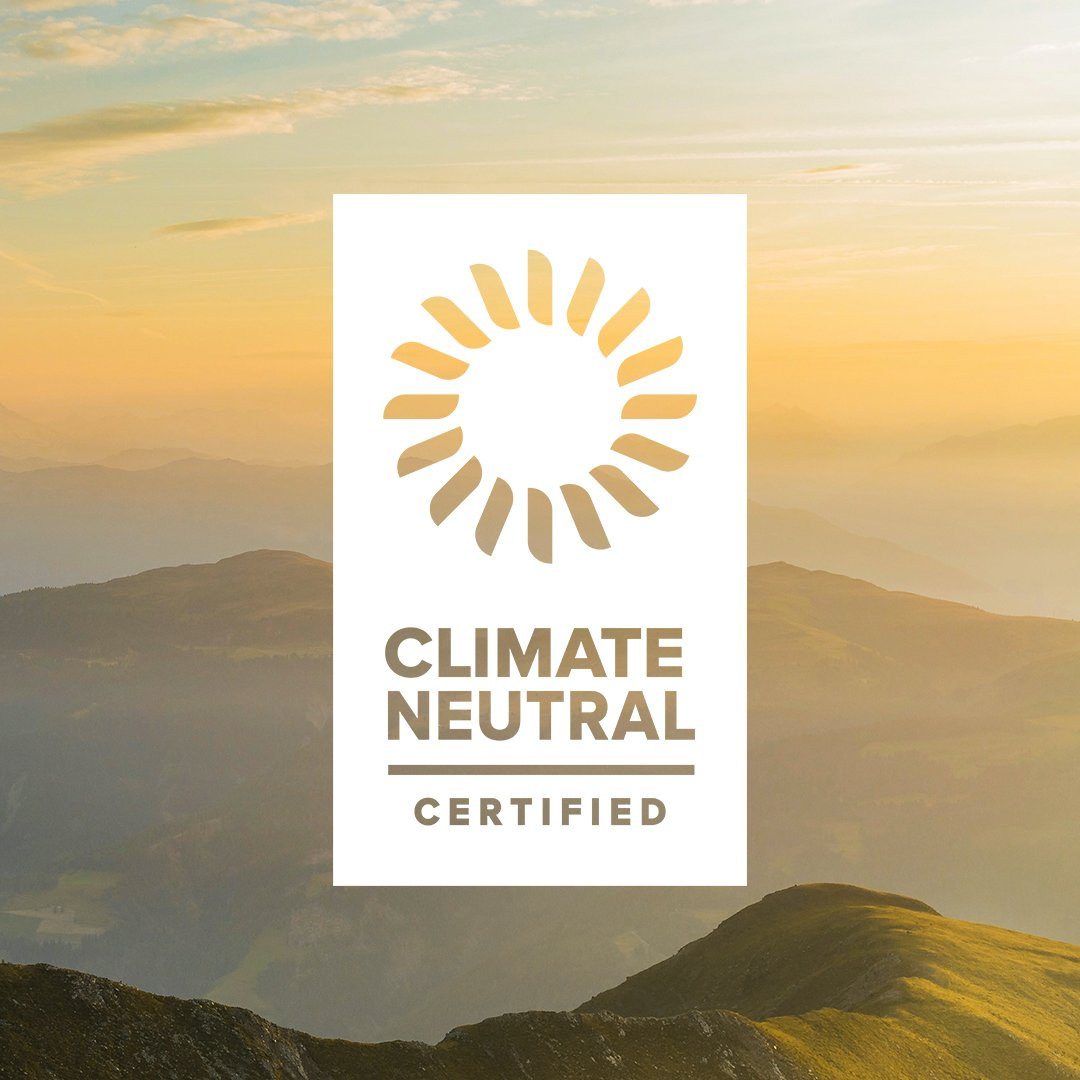
By now, it is no secret that business operations have a large impact on the health of our planet. In fact, it has been reported that over 70% of emissions come from about 100 companies. As a small, low-waste, Earthling-friendly business, our carbon footprint may not compare to those of larger corporations, but we still feel compelled to take responsibility for our impact and learn how to reduce it moving forward. That is why we became Climate Neutral Certified. Keep reading to learn what it means to be "Climate Neutral" and what this certification involved.
What is Climate Neutral?
Climate Neutral is an independent, non-profit organization that is committed to solving climate change by making carbon neutrality simple and accessible for companies. They do this by providing a certification process that allows businesses to measure, offset, and reduce their overall carbon footprint. Austin Whitman, the CEO of Climate Neutral, explains the mission behind their organization when he says "Consumers hold massive power to shape the economy, and their power is exerted through the actions of the brands they support. With our climate label, we’re helping consumers find the brands that are willing to invest immediately in climate solutions.”
What does the Climate Neutral Certification involve?
As previously mentioned, the Climate Neutral Certification is a guided three-step process: measure, offset, and reduce.
Measure
The first step in the process is measuring the company’s carbon footprint. Per the Greenhouse Gas Protocol, this includes collecting data from the previous year for Scope 1, 2 and 3 emissions. These scopes include emissions from the creation of the products, all the way until they arrive at the customer's doorstep. Basically, each company is responsible for analyzing their entire supply chain and measuring the impact that their business operations create. For us, that amounted to a 2020 footprint of 523 metric tons of carbon! (In comparison, REI's 2020 carbon footprint was 250,422 metric tons of carbon.)
This step is important because it allows the company to not only recognize the impact of their business operations, but breaks the footprint down into concise sections so that they can identify main areas of growth and take actionable steps to reduce their emissions moving forward (but we will get to that in step 3)!
Offset
The next step in the process is offsetting the company’s carbon footprint. This is done by purchasing a portfolio of carbon credits equal to the previous year’s emissions. While this step looks different for each company, in our case, we sourced our carbon credits from 1% For the Planet non-profit projects that focused on climate change solutions.
The first project we purchased offsets from was the Sichuan Rural Poor-Household Biogas Development Programme. In Sichuan, China, inadequate waste management systems are creating methane emissions and health issues for many local, developing communities. This program helps those communities transition to using biogas digesters, that can convert organic waste into clean fuel and compost. This in turn reduces dependence on coal and wood burning (and therefore emissions), creates healthy sanitation systems, and supports the health of local communities by generating a good source of local nutrients for crops. The Sichuan Rural Poor-Household Biogas Development Programme also supports local economic development by hiring members of the community and providing an opportunity, to those with the digesters, to sell their produced compost as an alternative source of income.
The second project we purchased offsets from, the Hernando County Landfill Electric Generation, focuses on landfill methane capture within the U.S. Over the course of 100 years, methane is roughly 30 times stronger as a greenhouse gas compared with carbon dioxide, and according to the EPA, landfills are currently the third-largest contributor to human-influenced methane emissions across the country. This project collects landfill gas from the Hernando County Northwest Landfill in Brooksville, Florida and converts it into power that can fuel about 1,000 local homes. This reduces dependence on additional fuel sources, and also prevents these landfill gases from entering the atmosphere.
This step is important because carbon offsets drive immediate investment into climate change solutions, like the projects mentioned above, while we work on the next step, reducing our emissions.
Reduce
The last step is creating a reduction action plan to reduce the company’s carbon footprint within 12-24 months of certification. This step, much like the last one, can (and should) look different for each company. It requires that the business carefully examines their footprint measurement and identifies areas of growth. Here at The Earthling Co., we are focusing on reducing our upstream, or incoming, shipment emissions by committing to the following:
1. Decreasing the percentage of products that are sourced from outside of the US, and moving our products closer to our Earthlings.
2. Reducing the percentage of shipments that are sent via aircraft freight by implementing an order placement system that utilizes bulk, quarterly shipments that are primarily sent via ground freight.
While these two reduction goals will not be the only changes we make in the future to reduce our footprint, we believe they will be the most impactful shifts for the current state of our company.
While some may think steps one and two are enough for a company to take responsibility for their impact, this final step is essential to breaking the tradition of companies creating long-term climate commitments and not following through on them. By committing to reducing our impact between 12-24 months from certification, we are refusing to follow in their footsteps, and instead keeping ourselves accountable and taking action NOW.





